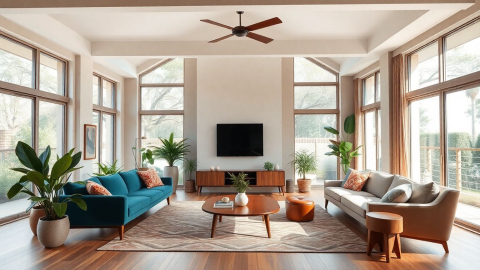Industrial Interior Design: The Sustainable and Textural Revolution
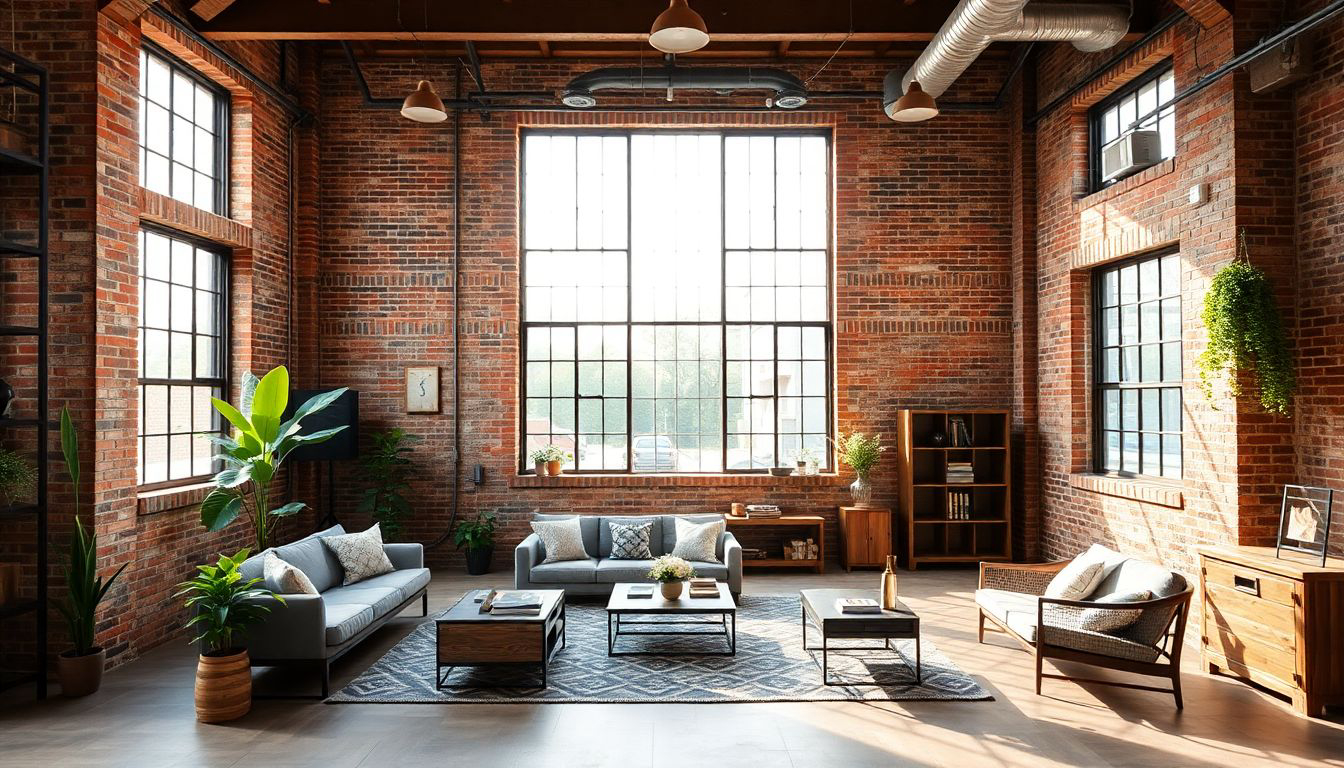
73% of industry leaders report a growing interest in sustainable design practices, particularly within industrial settings. This statistic underscores a pivotal shift in the interior design industry towards integrating sustainability with the raw, utilitarian aesthetic of industrial design. Industrial interior design, known for its use of raw materials and open spaces, is now embracing sustainability not just as a trend but as a necessity for modern living and working environments.
The Intersection of Sustainability and Industrial Design
Industrial design has always been about showcasing the beauty of raw materials like brick, metal, and reclaimed wood. However, the integration of sustainability into this aesthetic is transforming how designers approach their projects. The focus is now on reducing the environmental footprint through:
Choosing materials with low embodied energy, such as reclaimed wood or recycled metal, which not only adds character but also significantly lowers the carbon footprint. The use of these materials helps in creating a space that feels authentic and lived-in, while also being eco-friendly.
Energy efficiency is another critical aspect, where industrial spaces leverage natural light, thermal mass cooling, and solar heating to regulate temperatures. This not only reduces operational costs but also aligns with the aesthetic of openness and functionality inherent in industrial design.
Moreover, the integration of sustainable practices into industrial design isn't just about the environment; it's about creating healthier workspaces. By focusing on indoor environmental quality (IEQ), designers are ensuring that industrial spaces are not only visually appealing but also conducive to the well-being of their occupants.
Texture as a Design Element
Texture plays a pivotal role in modern industrial interior design, adding depth, character, and a tactile dimension to spaces. Here's how textures enhance industrial environments:
Balancing textures is key to avoiding an overwhelming space. Designers often choose one dominant texture, like exposed brick, and complement it with softer, more inviting textures such as plush textiles or greenery. This balance not only creates visual interest but also makes the space more livable.
Layering different textures, from the rough-hewn wood to the smooth, cool metal, provides a sensory experience that is both visually and physically engaging. This approach helps in softening the starkness often associated with industrial design, making it more inviting.
Textures also improve acoustics in industrial spaces. For instance, incorporating softer surfaces like fabric or carpet can absorb sound, reducing echo and making the environment more comfortable for communication and work.
Balancing Industrial Design with Comfort
One of the challenges in industrial interior design is to maintain the raw aesthetic while ensuring the space is comfortable and inviting. Here's how designers achieve this balance:
Introducing soft textures and fabrics can significantly alter the feel of an industrial space. Plush rugs, cushions, and drapes in neutral or warm colors can soften the starkness of metal and concrete, creating a cozy ambiance.
Greenery and natural elements are not just decorative; they bring life into industrial spaces. Large plants or vertical gardens contrast beautifully with industrial materials, enhancing the warmth and openness of the space.
Comfortable furniture, like upholstered sofas or armchairs, adds a touch of luxury and comfort. The juxtaposition of these elements with the rugged industrial features creates a harmonious blend of functionality and comfort.
Integrating Industrial Design with Modern Living
Industrial design isn't just about aesthetics; it's about creating functional, sustainable, and personalized spaces. Here's how designers are integrating industrial elements into modern living:
Mixing and matching industrial elements with other styles allows for a unique and personalized look. This approach focuses on functionality, maintaining simplicity, and letting industrial elements shine through.
The focus on functionality means choosing pieces that are both practical and stylish. Open spaces and simple lines reinforce the industrial ethos, while the integration of smart technology enhances sustainability and efficiency.
Refining the color palette to include blacks, browns, metallic silver, and grey, with occasional splashes of white or bright colors, helps in creating a cohesive industrial look that's both modern and timeless.
Adding vintage or salvaged pieces not only adds character but also aligns with sustainable practices by reusing materials. This approach enriches the space with history and depth, making each design unique.
Conclusion
Industrial interior design is evolving, embracing sustainability not just as an aesthetic choice but as a fundamental principle. The integration of sustainable materials, energy-efficient practices, and the thoughtful use of textures are redefining what industrial spaces can be. These spaces are not only visually compelling but also contribute to the health and well-being of their occupants, reflecting a broader industry shift towards responsible design. As we look to the future, industrial design will likely continue to innovate, merging the raw with the refined, and the functional with the sustainable, creating environments that are both beautiful and beneficial.
References
- The Impact of Sustainability on Industrial Interior Design by Green Building Elements - Link
- How to Incorporate Industrial Design Elements into Your Home by Hunker - Link
- The Role of Textures in Modern Industrial Interior Design by Materials.Net - Link
More Articles

Victorian Interior Design: Blending Timeless Elegance with Modern Sensibilities
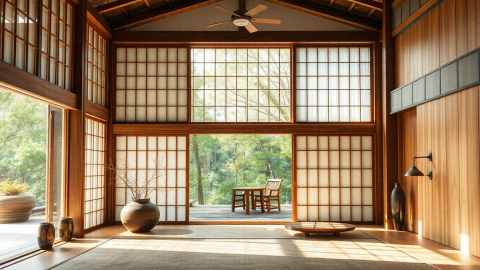
Zen and the Art of Imperfect Interiors: A Satirical Guide to Japanese-Inspired Design
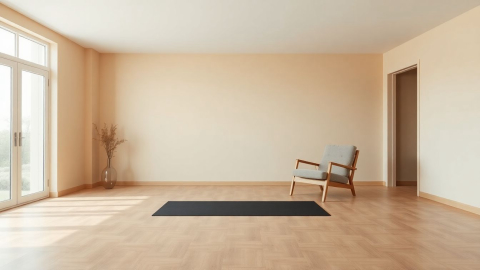
The Laughable Illusion of Minimalist Interior Design: A Satirical Take
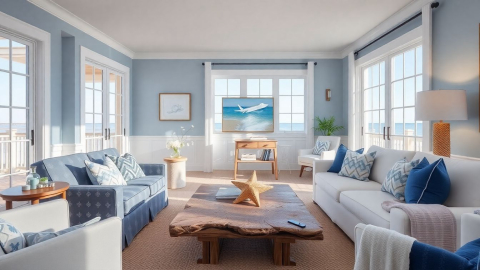
Coastal Chic: A Satirical Dive into the World of Coastal Interior Design
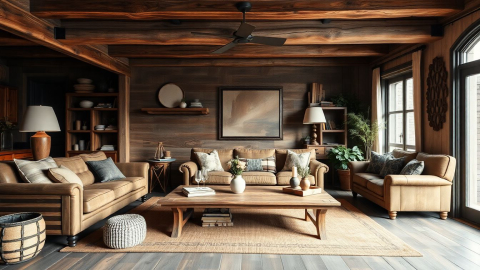
Rustic Chic: The Hilarious Trend of Pretending Your Home is a Barn
